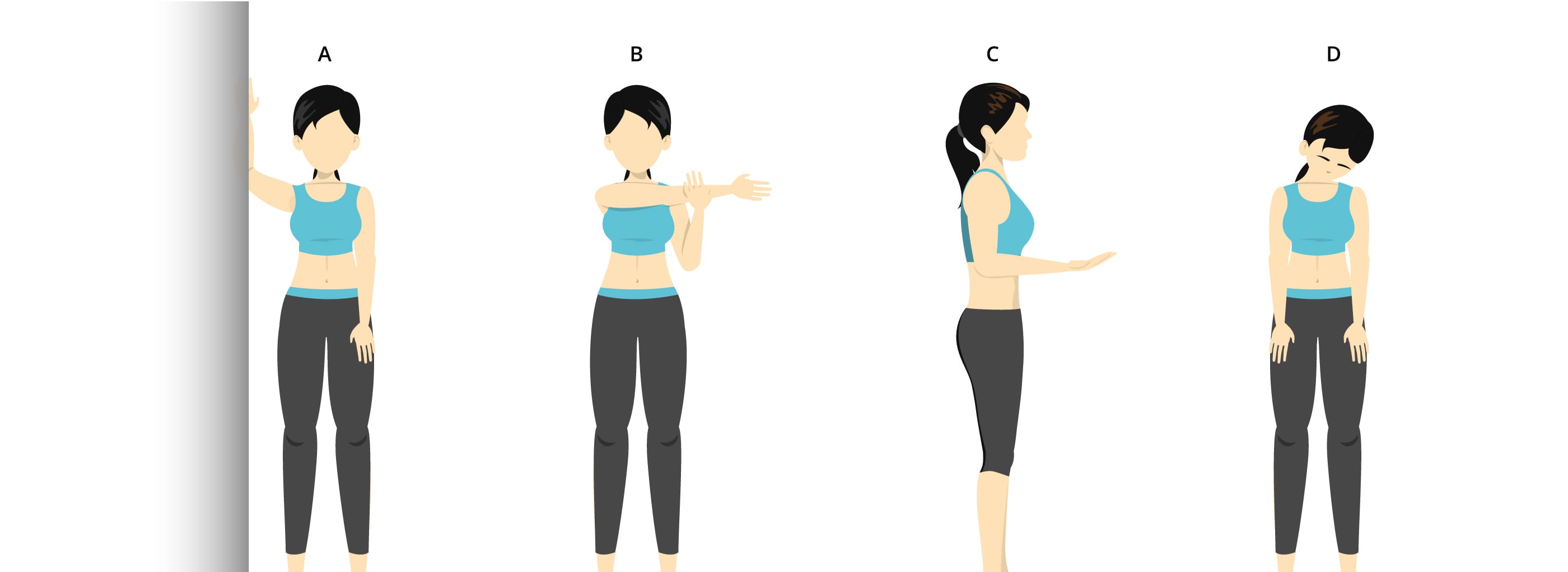Exercises addressing the most common shoulder problem – rounded and protracted shoulders.
The shoulder complex consists of the humerus, scapula, clavicle and the ribs. All of the hard frame and the surrounding musculature needs to be working in harmony to ensure fluidity and strength in shoulder movement.
When shoulders are rounded, the muscles in front of the chest (pectoral muscles), rotator cuff muscles, neck muscles front and back become shortened and tight. In addition, the muscles between the scapula and spine are more often than not on stretch, and can also be tight. The glenoid fossa (the socket where the humeral head sits) is also pointing forwards and downwards. This means when you try to lift up your arm to the ceiling there is increased likelihood of pinching the muscles that run under the clavicle such as the supraspinatus.
Exercises to help with getting the scapula and the humerus into better position will help improve mobility, decrease any discomfort and facilitate optimal strength and power of the surrounding musculature.
The following stretches will help decrease tension around the shoulders. Refer images at end of article for visual reference
A) Pectoral stretch:
Place your arm in a stop sign position with forearm against the wall. Turn your body away from your arm. Note the higher the elbow is, you will stretch the lower fibres of pecs. The lower the elbow is, you will be stretching the higher fibres of pecs.
B) Deltoid or rotator cuff stretch:
Keeping your right elbow straight, take your right arm across your body. Pull your right elbow to chest.
C) Repositioning
We have all heard and have been told the phrase: “Get your shoulders back and down”. Unfortunately, when people try to do this, they often forget about their head, neck and humerus. Their scapula may be being pulled back, but their head, neck and humeral head are usually translating forwards. This is a simple exercise to reposition the humeral head in the glenoid fossa:
Keep the elbow in front of your side seem. Try to widen the space between the coracoid process (a bone poking forwards just under the clavicle) and the head of humerus – sometimes the cue of sucking the head of humerus back helps. Imagine you are holding a tray of drinks and you are serving someone beside you by keeping your elbow at your side. You should feel the area behind your head of humerus working… or burning. There should be no discomfort in your neck or on the top of your shoulder.
D) Neck stretch:
Bring your right ear to your shoulder and then try to ‘sniff’ your right arm pit.
Watch this space for shoulder exercises if you have a downwardly rotated scapula – very different from the protracted rounded shoulders of this article.



